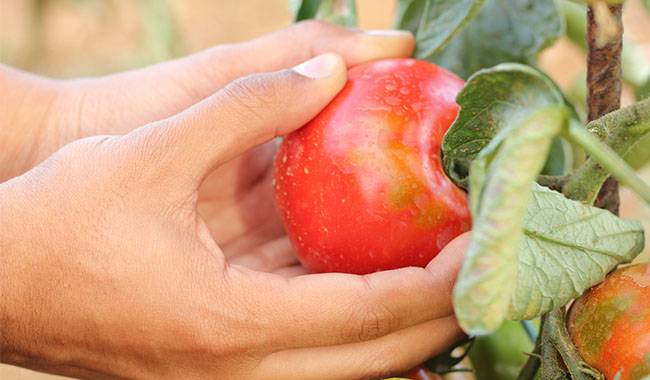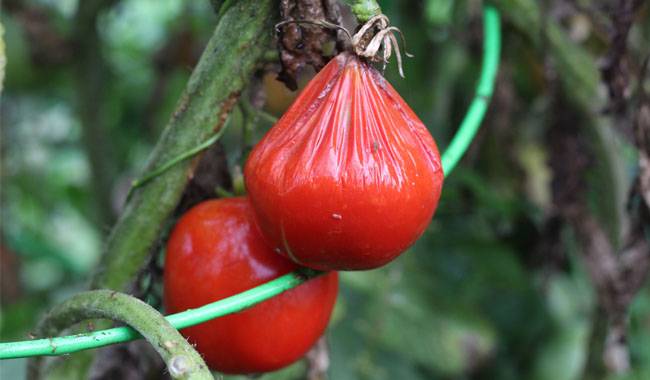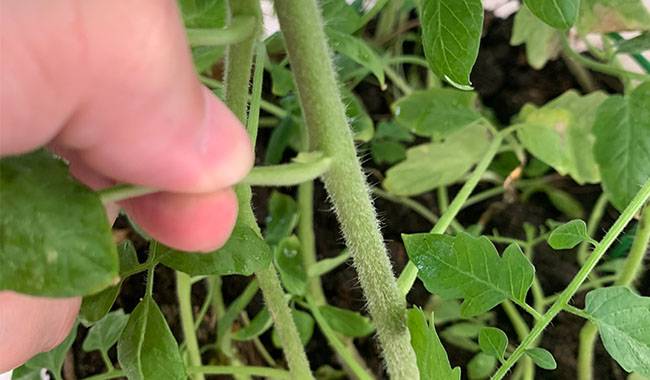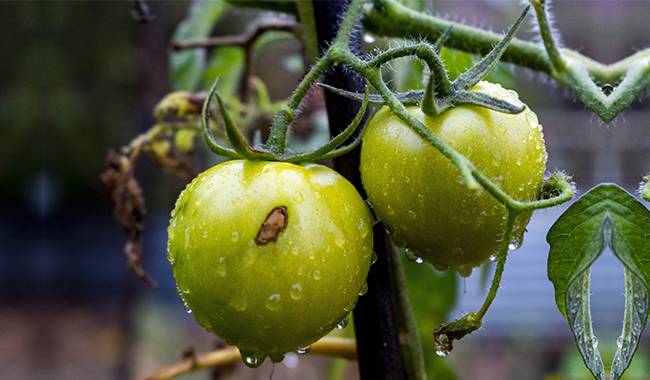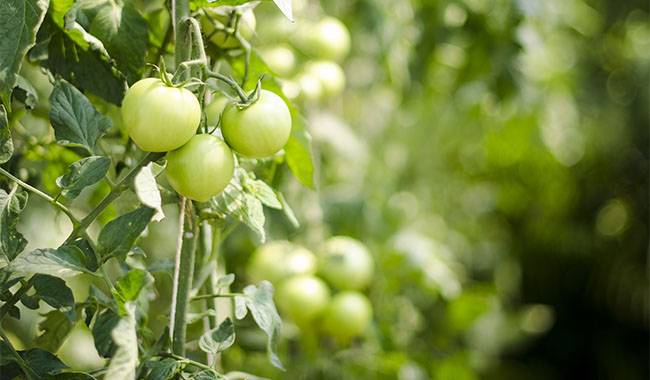
As with all living things, some plants are compatible and others don’t get along well when planted together. Plants that are compatible with each other usually bring some benefit to each other. For example, one plant may attract insects that help pollinate another plant. The root systems of some plants can also work well together.
In this article, we will explore the combination of Tomatoes with other plants. According to gardeners’ observations, grow tomatoes next to some crops provides an added benefit – increased plant growth and fruit quality. Other companions, on the contrary, are detrimental to tomatoes.
FLOWERS THAT ARE COMPATIBLE WITH TOMATOES
Many beautiful flowers and plants are known to repel and drive away insects, so planting them next to tomatoes will help reduce the damage that pests can do to them.
Marigolds, also known as marigolds, usually repel many bugs that are harmful to tomatoes, such as worms. Velvetta also protects against insects such as whiteflies, tomato bugs, various beetles, cabbage moths, and soil nematodes.
While this combination may seem odd from a landscaping standpoint, gardeners have also noticed that tomatoes have a positive effect on rose bushes.
Planting tomatoes next to roses has been observed to protect them from black spots and other fungal infections. Tomato leaves contain a chemical that acts as an insecticide against some insects that can attack roses.
The strong smell of nasturtiums and marigolds confuses pests looking for their favorite foods. In addition, their roots produce an insect repellent substance that repels nematodes. Nasturtiums have been reported to be effective against whiteflies and cabbage moths, as well as aphids and some beetles.
Cornflowers, cosmos, goldenrod, chrysanthemums, and rudbeckia attract insects, and the insects provide additional pest control by trapping the pests.
WHICH HERBS SHARE A BED WITH TOMATOES?
We often use spices to add spice to our food, but many spices are also good partners for tomatoes. The classic combination of tomatoes and basil works well both on the plate and in the vegetable garden bed.
Basil is thought to repel mosquitoes, flies, and tomato bugs, and also helps attract beneficial insects to your garden.
So far, there is no scientific basis for this, but gardeners have observed that basil can also improve the taste of tomato fruit and promote more vigorous plant growth.
The only way to test this claim is to try planting basil next to the tomatoes in your beds. Basil in particular tends to be shorter than tomatoes and will not shade the light. Borage (borage, cucumber grass) also provides shrub protection from tomato bugs.
Not only is mint an excellent ingredient and soothing agent for tea, but it also repels typical garden pests such as ants, mice, and fleas. Mint is also effective against cabbage moth pests and improves the overall immunity of tomato trellises, improves the taste of the fruit, and more.
Spearmint can be grown next to tomatoes or as a useful mulch for tomato beds. Lemon squash and juniper are close relatives of mint and attract pollinators, promote tomato pollination, and also improve the taste and growth intensity of tomatoes.
Other herbs that grow well next to tomatoes are shallots and parsley. Parsley speeds up tomato growth and attracts predatory insects that feed on tomato bugs.
However, you should keep in mind that parsley should not be planted next to mint because these two plants have a very negative effect on each other. On the contrary, you can plant parsley in the company of tomatoes and roses, because parsley also helps to enhance the fragrance of roses.
VEGETABLES COMPATIBLE WITH TOMATOES
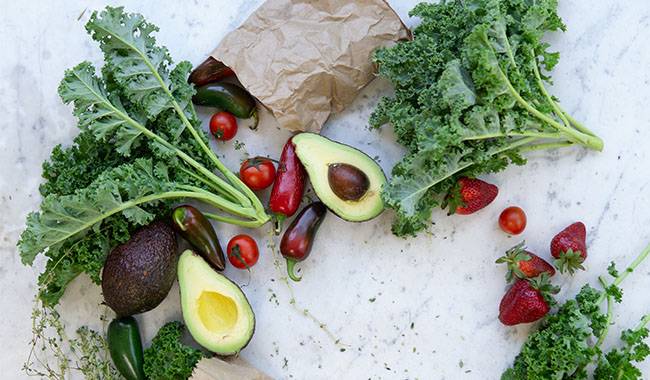
Some vegetables are also compatible with tomatoes in the same bed. Garlic and onions are some of the most effective plants that successfully repel pests. And members of the onion family are very good partners for tomatoes and are particularly effective against aphids, beetles, and spider mites (especially red spider mites).
Onions planted in a ring around tomato beds protect the plants from pests such as mites, slugs, and earwigs, and relatedly repel marmots.
Garlic protects tomatoes from red spider mites and is also effective against aphids in roses, making these crops suitable as a garden trio.
Another popular trio to grow together is garlic, basil, and tomatoes because garlic heads protect against aphids, mites, and nematodes (roses, by the way, protect against black spots).
Broccoli also grows well next to onions, garlic, and tomatoes, so it’s worth considering planting them together.
Early carrots can also be planted next to tomatoes, as you can harvest them before the tomato bush grows and starts taking up space.
Although carrots do not protect against disease and repel insects, they are considered friendly neighbors to tomatoes. Its deep roots loosen the soil around the tomatoes, making it easier for water as well as nutrients and air to circulate around the tomato roots.
However, keep in mind that there is also evidence that proximity to tomatoes inhibits the growth of carrots, even though the roots taste good. In addition to early-maturing carrots, spinach and leafy greens also contribute to efficient use of tomato bed space, as these crops can be harvested shortly after tomato seedlings are planted.
Beans and peas are often combined with many crops because legumes enrich the soil with nitrogen. Planting asparagus between tomato plants protects them from insect damage.
The two plants are harvested at different times of the year, and combining them saves space in the bed. Asparagus appears in early spring, while tomatoes are planted much later.
PLANTS THAT ARE NOT COMPATIBLE WITH TOMATOES
Some plants can harm tomatoes when they are grown nearby. Potatoes and tomatoes belong to the nightshade family and are susceptible to the same diseases and infections, so they should be planted as far away from each other as possible.
Corn is another plant that is incompatible with tomatoes because the insect can affect both plants. Most members of the Cruciferae family need a lot of nutrients and take a lot of nutrients from the soil, which tomatoes are deficient in. In addition, cabbage can inhibit the growth of tomatoes in general.
Some plants are simply not designed to coexist in the same place, and combining them can severely hinder plant growth or increase the vulnerability of one or both plants to pests and diseases.
In particular, those that negatively affect tomatoes are fennel, dill, luta, kohlrabi, cabbage, cauliflower, walnuts, apricots, etc.
Therefore, do not plant in the same bed or adjacent beds with tomatoes. Also, beds with tomatoes should be separated from walnuts and apricots as much as possible, even if they are seedlings.
Dear readers! In most cases, the compatibility of plants is based on the experience of others or folk omens. And unfortunately, there are no scientific studies to confirm or refute these recommendations.
But why not experiment with joint planting on plots? After all, in the worst-case scenario, you will get more diversity in your vegetable garden. Therefore, it is quite recommended to try the combinations described below and evaluate the results for yourself.




